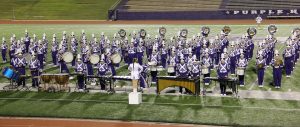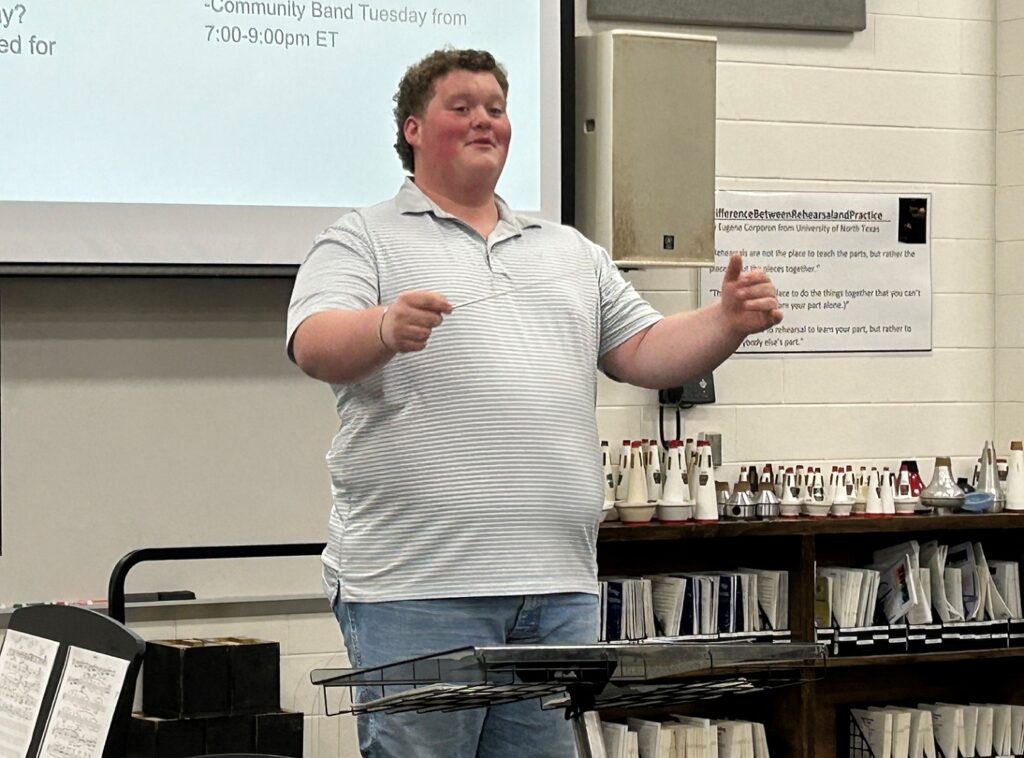Tagged Under:
Teaching Music in High-Need Schools: Recruitment
In Part 1 of this series, we look at three essential and data-driven practices to excel at recruiting for your music program.
This article serves as the first in a series of discussions related to teaching music in today’s school environment. A growing majority of music educators in the United States work in public schools that are increasingly diverse and categorized as high-need. A high-need school, also known as a Title I school, is defined as any public pre K-12 school that is “located in an area where at least 30% of students come from families with incomes below the poverty line” (No Child Left Behind Act of 2001, p. 173).
My goal through this series of articles is to share my experiences as a music teacher in high-need schools, as well as how I help prepare future educators in my current role as an associate professor and coordinator of the music education program at Tennessee State University. These are the strategies and beliefs that I believe are essential for success in these settings.
Through teacher training while at university or in professional development settings after we become educators, experts in the field often share best practices for music education through a lens of optimal circumstances. Abundant resources, teacher autonomy, and strong administrative and parental support for the arts usually serve as the foundation for these conversations. However, many of us find or will find ourselves leading programs that may not yet have such strong infrastructure, according to Jennifer Doyle in her research article, “Music Teacher Perceptions of Issues and Problems in Urban Elementary Schools.” It is my hope that this series will provide effective strategies for future and current teachers in high-need schools.
Use Data Effectively
 I would like to begin this series by sharing what is one of the core tenets of building and sustaining school music programs: recruitment. As a music educator in the age of data-driven decision making, I have tried to leverage administrator demands for data by providing evidence of how students, parents and staff make the program shine, as outlined in Roger Mantie’s “The Philosophy of Assessment in Music Education.”
I would like to begin this series by sharing what is one of the core tenets of building and sustaining school music programs: recruitment. As a music educator in the age of data-driven decision making, I have tried to leverage administrator demands for data by providing evidence of how students, parents and staff make the program shine, as outlined in Roger Mantie’s “The Philosophy of Assessment in Music Education.”
Whether it is tracking attendance for concerts and events, increasing followers to our social media platforms, analyzing student and ensemble performance outcomes or sharing enrollment data with administrators and community partners, I believe that the ways in which we integrate data can help drive our recruitment activities. The following are what I believe to be three essential practices to excel at recruiting for your music program.
1. Recruitment Is a Year-Round Process
 Recruitment has no real beginning or end. It is a continuous process fueled by active recruiting strategies, culturally relevant curricula and student ownership of the process, according to Daniel J. Albert’s “Strategies for the Recruitment and Retention of Band Students in Low Socioeconomic School Districts.” In addition to your planned recruitment activities at the beginning and end of the academic year, look for ways to recruit students into the program throughout the year. When I taught middle and high school band, I made it a priority to develop rapport with the staff responsible for student schedules. I made sure they knew that I was flexible and open to receiving new students throughout the year.
Recruitment has no real beginning or end. It is a continuous process fueled by active recruiting strategies, culturally relevant curricula and student ownership of the process, according to Daniel J. Albert’s “Strategies for the Recruitment and Retention of Band Students in Low Socioeconomic School Districts.” In addition to your planned recruitment activities at the beginning and end of the academic year, look for ways to recruit students into the program throughout the year. When I taught middle and high school band, I made it a priority to develop rapport with the staff responsible for student schedules. I made sure they knew that I was flexible and open to receiving new students throughout the year.
At the beginning of each semester, I would make brief in-classroom visits to each homeroom and give my quick 30-second “elevator pitch” to each class. I would sometimes bring current students in the program with me. It was important for students to know that they did not need prior experience, just a love for music, to be a part of our program. I also made sure that the students were at the center during all our fundraisers, concerts and community events. They would lead, organize and oversee much of the planning and execution for our activities. This allowed their peers, parents, administration and community see just how awesome being in the music program was. This continuous process of year-round recruitment with student ownership at the center helped us significantly to enroll students in our music program.
For the purpose of data collection and analysis, I would use an Excel spreadsheet to keep track of how many potential recruits we contacted at our recruitment events and performances, feeder school visits, and in-classroom visits at the beginning of each semester. I would then convert the data into bar graphs that compared the current term’s activities to the previous term to show recruitment gains and program growth to my administration and parent boosters.
2. Anything Can Be a Recruitment Opportunity
 Performance is a great way to showcase your students’ abilities, and it also serves as a chance to connect with potential recruits. Whether we performed at a sporting event, seasonal concert, performance assessment or a community event, I always made sure to provide space for recruiting. Students shared their experiences in the music program, and I had flyers, handouts and contact information ready to give out to students and parents who might be interested in signing up.
Performance is a great way to showcase your students’ abilities, and it also serves as a chance to connect with potential recruits. Whether we performed at a sporting event, seasonal concert, performance assessment or a community event, I always made sure to provide space for recruiting. Students shared their experiences in the music program, and I had flyers, handouts and contact information ready to give out to students and parents who might be interested in signing up.
At every performance and event we would keep track of selections performed, estimates of audience in attendance, and number of students who expressed an interest in wanting to join our organization. We would also track the number of views, likes, shares and followers on each of our social media sites. These would be compared monthly through line graphs generated in Excel and posted in the classroom to show our growing social media presence. Because it was mandatory for teachers at my school to post data on the walls, I always looked for creative ways to involve our students and present data that was fun for them to engage in and meaningful for our program’s growth.
We also had a student-led social media team that helped us share everything that was happening in the program and posted information on how to join. At every fundraiser and community event, our parent boosters and student leaders would also use those opportunities to share about the program’s successes. These moments helped generate great “buzz” around the program and helped attract even more students to us.
3. Setting Enrollment Goals
 There are several ways to look at and set your enrollment targets. Some look at what percentage of the total school population is enrolled in a particular program, while others look at numbers of new recruits versus retention of prior classes. And there are still others who look at historic trends and set targets based on those.
There are several ways to look at and set your enrollment targets. Some look at what percentage of the total school population is enrolled in a particular program, while others look at numbers of new recruits versus retention of prior classes. And there are still others who look at historic trends and set targets based on those.
We know that COVID set many school music programs back as it pertains to enrollment, and it can be demoralizing to see a program that was once thriving be so severely impacted. But, if we establish a new baseline and redefine how we measure success, we can ensure that our strategies align to our teaching philosophy and with the mission and vision of the school and community. Thomas Rinn’s article, “Research-to-Resource: Persistence and Recruitment in Elective Choral Music During the Pandemic Recovery,” speaks to the importance of instruction that is student-centered, recruitment practices that are more inclusive, and alignment of program goals with those of the communities that we serve
Goals for this Series of Articles
Teaching music in a high-need school has its challenges, but the rewards that come with seeing the positive impact your program can have on students, parents, school and the community is immeasurable. While this article and this series might be helpful for music teachers in any setting, it has been prepared specifically with music teachers in high-need schools in mind. I hope that these strategies are helpful to you as you build a thriving and sustainable music organization in your school.
In subsequent articles, we will cover key issues that music teachers in high-need schools face, including building rapport with stakeholders, defining program success, student empowerment and more.
Thank you for being a part of this journey with us throughout the school year!
Read part 2 of this series on rapport.
Read part 3 of this series on defining success.
Read part 4 of this series on best practices.
Read part 5 of this series on funding.
Read part 6 of this series on retention.
Read part 7 of this series on sustainability.
References
- Albert, D. J. (2006). “Strategies for the Recruitment and Retention of Band Students in Low Socioeconomic School Districts.” Contributions to Music Education, 53-72.
- Doyle, J. (2012). “Music Teacher Perceptions of Issues and Problems in Urban Elementary Schools.” Bulletin of the Council for Research in Music Education, (194), 31-52.
- ED.gov. (n.d.). No Child Left Behind Act of 2001.
- Mantie, R. (2019). The Philosophy of Assessment in Music Education. In “The Oxford Handbook of Assessment Policy and Practice in Music Education, Volume 1” (p. 33). Oxford University Press.
- Rinn, T. J. (2023). “Research-to-Resource: Persistence and Recruitment in Elective Choral Music During the Pandemic Recovery.” Update: Applications of Research in Music Education, 41(3), 5-11.















